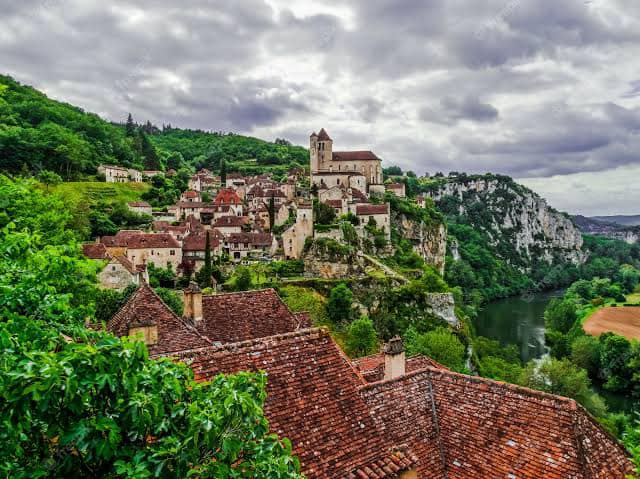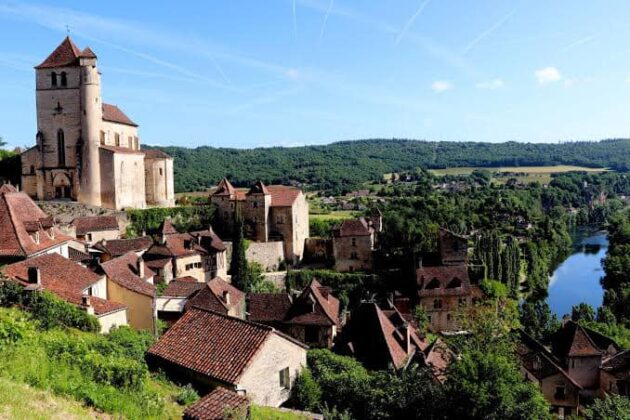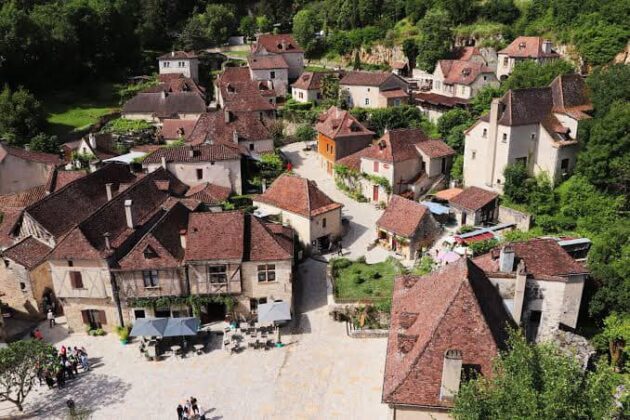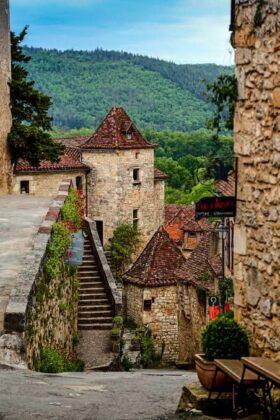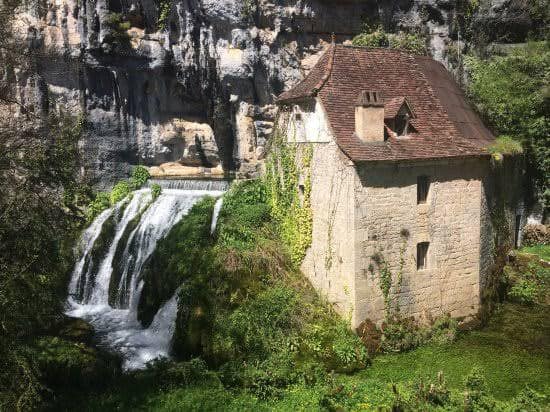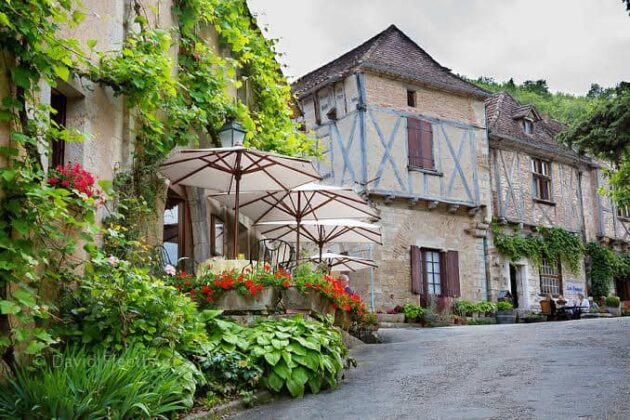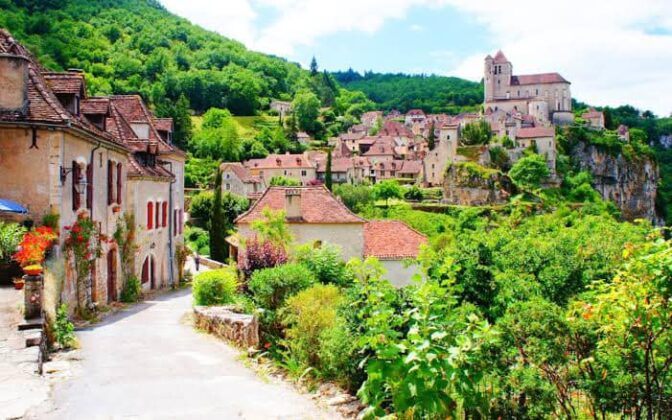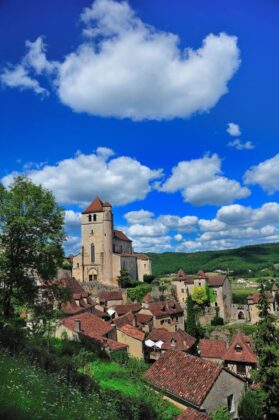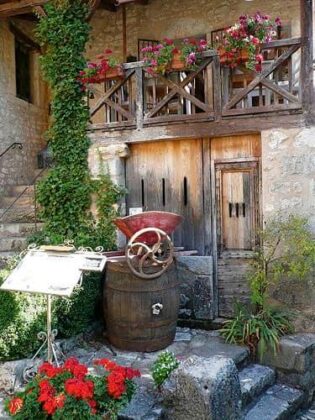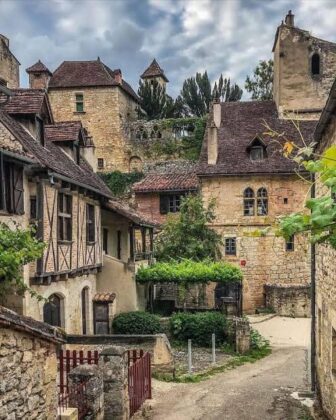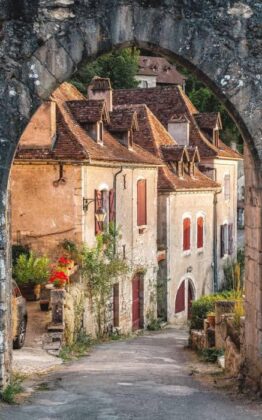They say it’s the most beautiful town in France, but one of the most beautiful, Saint-Cirq-Lapopie, is reflected in the waters of the Lot. An atelier over the river and a heritage to die for: Renaissance houses, medieval posts, alleys edged with Navarro, Umbrian squares and craft shops.
Nestled on the Lot River, the medieval village spectacularly adjusts to its cliff. “An impossible rose in the night.” Under André Breton’s pen, Saint-Cirq-Lapopie remains this timeless jewel in which time seems to slip away without leaving its mark.
Directly from the Middle Ages, this town, partly classified as a historical monument, can be walked to let yourself be better immersed by the nobility of its architecture and the elegance of its supports, stairs, and fortified doors.
Formerly a witness to thriving boat life and famous for its wooden latches, Saint-Cirq-Lapopie has 13 historical monuments. The people have preserved all their heritage but, above all, an incredible charm.
Shops, restaurants and cafes are sheltered from the sun in the shade of the eyewear doors, while the site is surprised by the general harmony that earned it the vote of the favourite people of the French in 2012.
From the early twentieth century, the town attracted Parisian artists and gallerists and, starting in 1950, many artists from the surrealist movement. In search of inspiration, artists have found their “Promised Land” here, where they can let their imagination fly.
Is it because of the gradation of subtle brown tones? The harmony of volumes? The magnificent views of the Valley of Lot? Whatever it is, painters, poets and writers haven’t stopped coming here to dip their pens and paintbrushes into all this beauty.
The numerous galleries and studios that have taken over their old buildings bear witness to this. This artistic dimension remains visible when you discover the contemporary art route, not forgetting the international artists’ residence installed in the Maison Daura.
The poet and writer André Breton was the one who introduced Saint-Cirq-Lapopie.
The earliest signs of human life around Saint-Cirq date back to prehistoric times: the Pech Merle cave features one of several important collections of prehistoric rock paintings found in the valleys of Lot and Célé.
The village of Saint-Cirq-Lapopie is located in the Causses Regional Natural Park of Quercy and was built in the Middle Ages on a cliff overlooking the Lot. This strategic position helped the village develop as a military and defensive site throughout the Middle Ages.
Starting from the 10th century, Saint-Cirq-Lapopie has been located in the heart of a powerful viscounty created after the division of lands owned by the counties of Quercy. Oldoric, the Viscount of Saint-Cirq, built the first castle on the site.
By the end of the 11th century, the viscounty was divided into three feuds controlled by three vassal families of the Counts of Toulouse: the La Popies, the Gourdon and the Cardaillacs. The centre of power in Saint-Cirq-Lapopie was a fortress 100 meters long and 45 meters wide, surrounded by a defensive wall and located atop the cliff.
Each of the three families built its castle inside the fort. The tower and the La Popie family residence were atop the rocky outskirts, while the Cadillac family castle was at the bottom. The latter is the best preserved of the three and attached to the parish church.
Nothing is left of the Gourdon family residence, and their exact location is unknown.
Underneath the fort developed a village, structured around shop streets and protected by two fortified gates. Many original homes still line the town streets, including the buildings listed by Maison Bordes and Maison Bessac. Its stone and wood facades were erected in the 13th and 16th centuries and reflected the town’s commercial development.
Economic and social problems from the mid-fourth to mid-fourth centuries, including the Hundred Years War, plague epidemics and bad crops, did not cause a significant decline in the people. It continued to grow through a new wave of construction projects.
One of the most significant was the reconstruction of the parish church in the middle stretch of the rock. Designed by master artisan Guillaume Capelle, the new church (1522-1540) is based on the abyss of the previous Roman church.
Remains of decorative cuts of 12th-century cobblestone leaves and fragments of 13th-century painted murals can still be seen today. In the Gothic-Languedocian style, the church is dedicated to San Cirico (the origin of the “Cirq” in Saint-Cirq-Lapopie), the youngest martyr of Christianity, and Saint Juliet, his mother.
This prosperous period ended in the second half of the 16th century due to the French Wars of Religion.
From the 16th century to today
Although the fort was gradually abandoned in the 16th century, the people returned to prosperity after the Religion Wars. A booming local economy grew around the wine and timber industry, particularly the timber tournament.
In the 17th century, urbanization worked to make the Lot River navigation boost the growth of trade and agriculture. The construction of bridges, roads, locks, canals and sirga paths made the riverway a thriving hub of activity.
These activities went extinct at the end of the 19th century, after a long course of prosperity, with the advent of the railway and the Grand Tizon of French Wine.
Saint-Cirq-Lapopie remained unchanged until the postwar years, when two art merchants, Emile Vinot and Joseph Rignault, settled in the town, along with artists such as Henri Martin and Pierre Daura.
Their arrival marked the beginning of a renewed interest in the site and opened it to the outside world, leading to tourism development after World War II.
Saint-Cirq-Lapopie’s reputation rose even further in the 1950s thanks to André Breton’s passion for the people. Upon discovering “this incredible rose in the night,” the leader of the surrealist movement acquired one of the town’s oldest houses, L’Auberge des Mariniers (The Sailors Inn), where he lived until he died in 1966.
The building includes a 12th-century tower, intended to defend the fortified villa, and 13th-century dwellings, which constitute the main body of the house.
